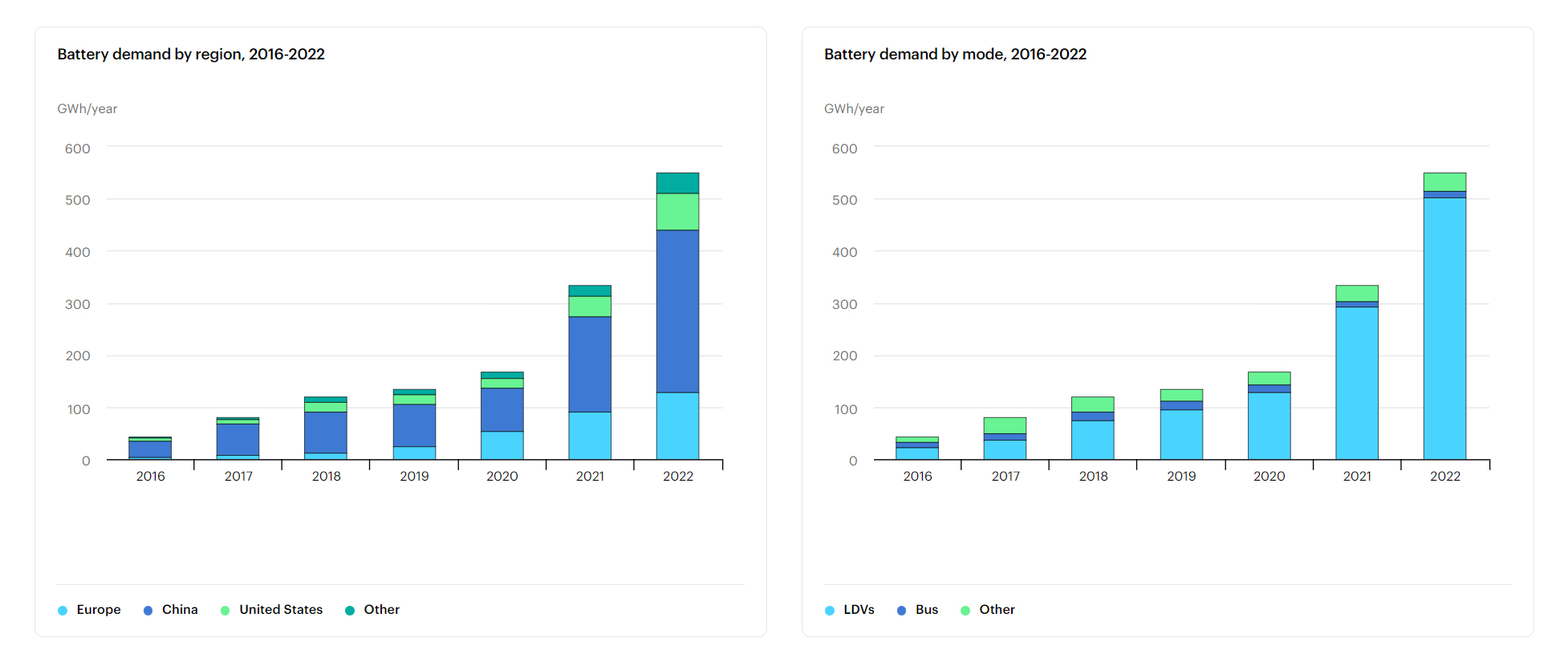Trends in batteries
Battery demand for EVs continues to rise
Automotive lithium-ion (Li-ion) battery demand increased by about 65% to 550 GWh in 2022, from about 330 GWh in 2021, primarily as a result of growth in electric passenger car sales, with new registrations increasing by 55% in 2022 relative to 2021.
In China, battery demand for vehicles grew over 70%, while electric car sales increased by 80% in 2022 relative to 2021, with growth in battery demand slightly tempered by an increasing share of PHEVs. Battery demand for vehicles in the United States grew by around 80%, despite electric car sales only increasing by around 55% in 2022. While the average battery size for battery electric cars in the United States only grew by about 7% in 2022, the average battery electric car battery size remains about 40% higher than the global average, due in part to the higher share of SUVs in US electric car sales relative to other major markets,as well as manufacturers’ strategies to offer longer all-electric driving ranges. Global sales of BEV and PHEV cars are outpacing sales of hybrid electric vehicles (HEVs), and as BEV and PHEV battery sizes are larger, battery demand further increases as a result.

The increase in battery demand drives the demand for critical materials. In 2022, lithium demand exceeded supply (as in 2021) despite the 180% increase in production since 2017. In 2022, about 60% of lithium, 30% of cobalt and 10% of nickel demand was for EV batteries. Just five years earlier, in 2017, these shares were around 15%, 10% and 2%, respectively. As has already been seen for lithium, mining and processing of these critical minerals will need to increase rapidly to support the energy transition, not only for EVs but more broadly to keep up with the pace of demand for clean energy technologies.Reducing the need for critical materials will also be important for supply chain sustainability, resilience and security. Accelerating innovation can help, such as through advanced battery technologies requiring smaller quantities of critical minerals, as well as measures to support uptake of vehicle models with optimised battery size and the development of battery recycling.










